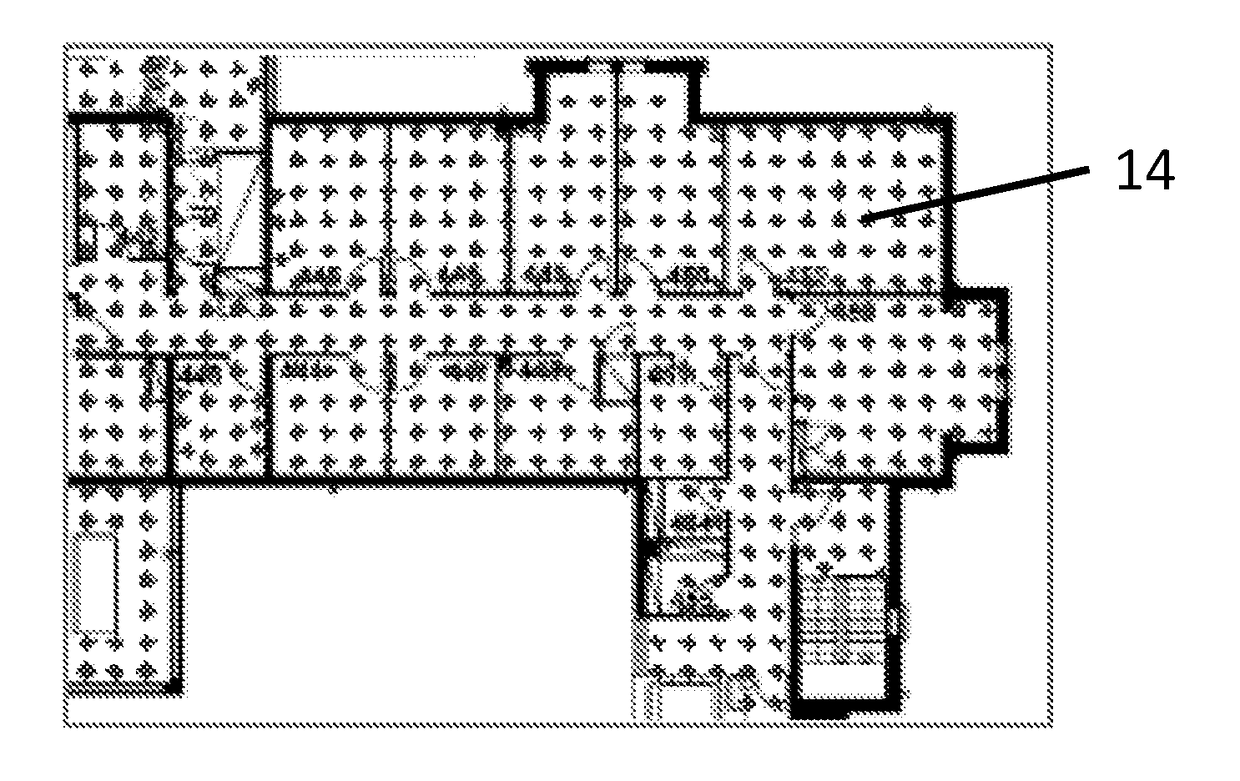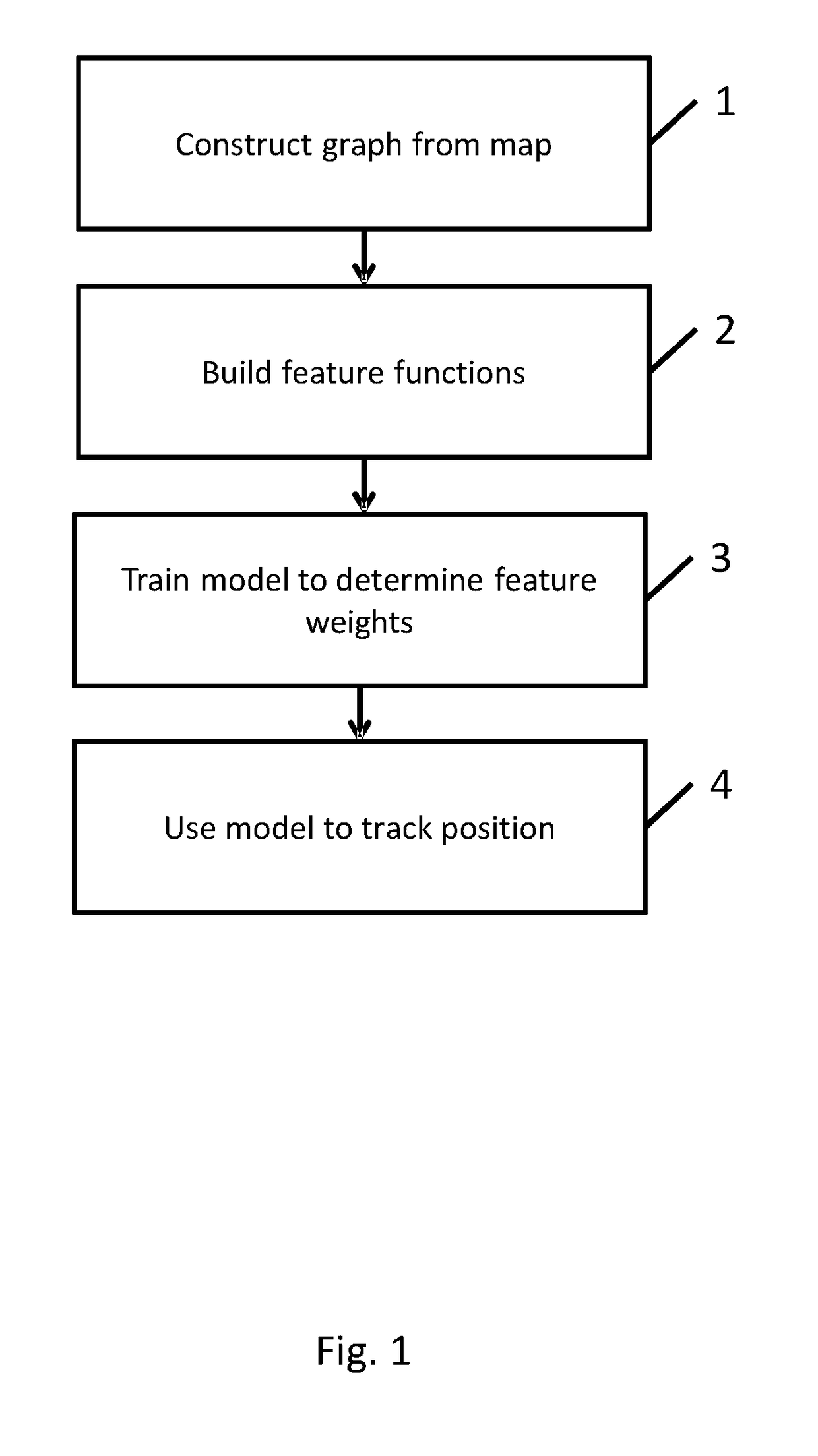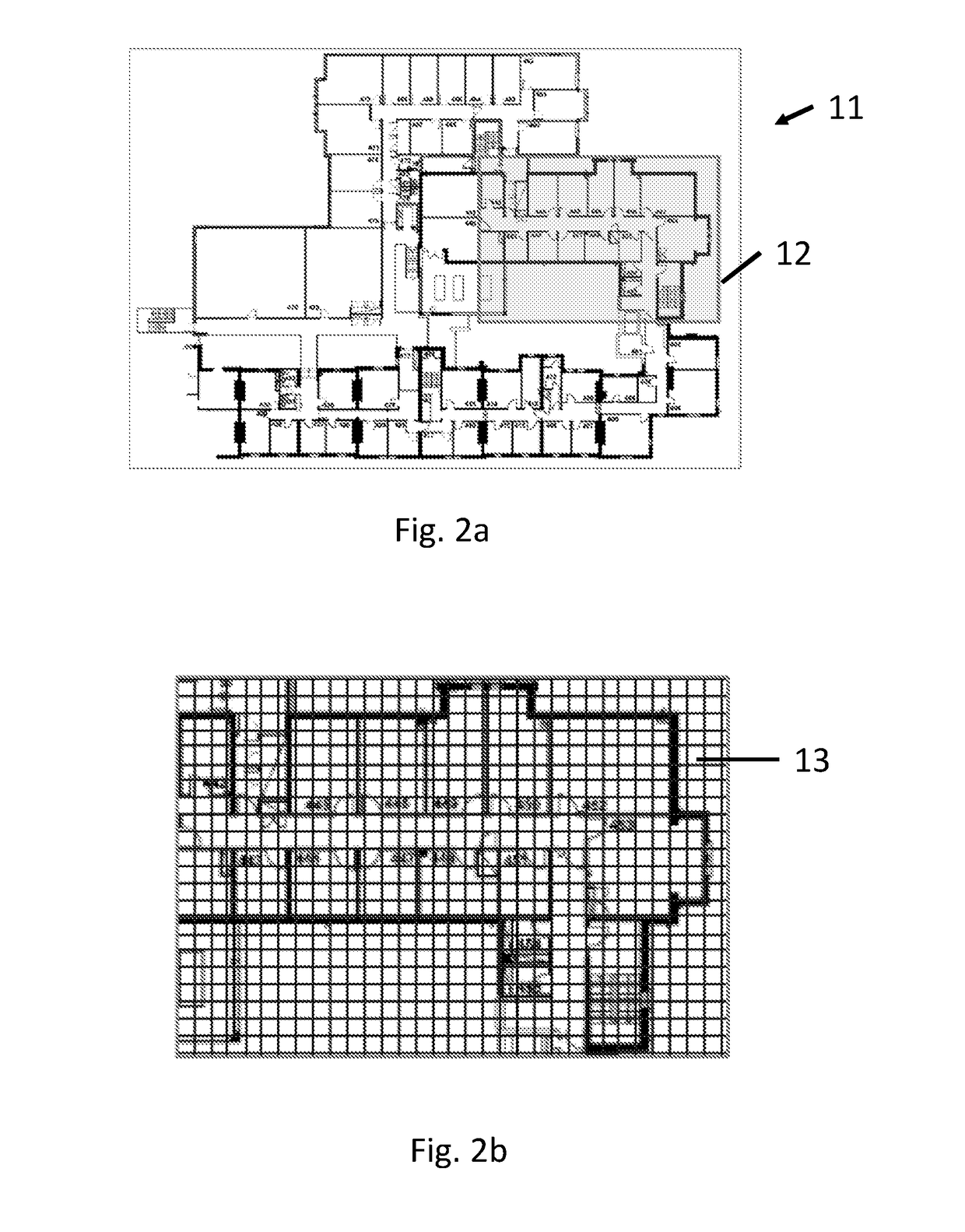Determining the position of a mobile device in a geographical area
a mobile device and geographical area technology, applied in surveying and navigation, instruments, navigation instruments, etc., can solve the problems of not always available gps data, no system has become predominant, all systems so far proposed have drawbacks, etc., to increase the accuracy of positioning, save energy, and reduce energy consumption
- Summary
- Abstract
- Description
- Claims
- Application Information
AI Technical Summary
Benefits of technology
Problems solved by technology
Method used
Image
Examples
Embodiment Construction
[0048]A system in accordance with an embodiment of the invention is now described with reference to FIGS. 1 to 3. The system determines the position of a device by map matching using an undirected graph model, in particular a model based upon linear chain conditional random fields (CRFs), as described in detail below. CRFs have been successfully used for various applications such as computer vision (e.g. to classify regions of an image), bioinformatics (e.g. to segment genes in a strand of DNA), and natural language processing (e.g. to extract syntax from natural-language text).
[0049]CRFs are undirected probabilistic graphical models that were introduced in J. D. Lafferty, A. McCallum, F. C. N. Pereira, Conditional random fields: Probabilistic models for segmenting and labelling sequence data, Proceedings of the Eighteenth International Conference on Machine Learning, ICML '01, pp. 282-289, 2001. In linear chain CRFs, the conditional probability of states given observations is propo...
PUM
 Login to View More
Login to View More Abstract
Description
Claims
Application Information
 Login to View More
Login to View More - R&D
- Intellectual Property
- Life Sciences
- Materials
- Tech Scout
- Unparalleled Data Quality
- Higher Quality Content
- 60% Fewer Hallucinations
Browse by: Latest US Patents, China's latest patents, Technical Efficacy Thesaurus, Application Domain, Technology Topic, Popular Technical Reports.
© 2025 PatSnap. All rights reserved.Legal|Privacy policy|Modern Slavery Act Transparency Statement|Sitemap|About US| Contact US: help@patsnap.com



